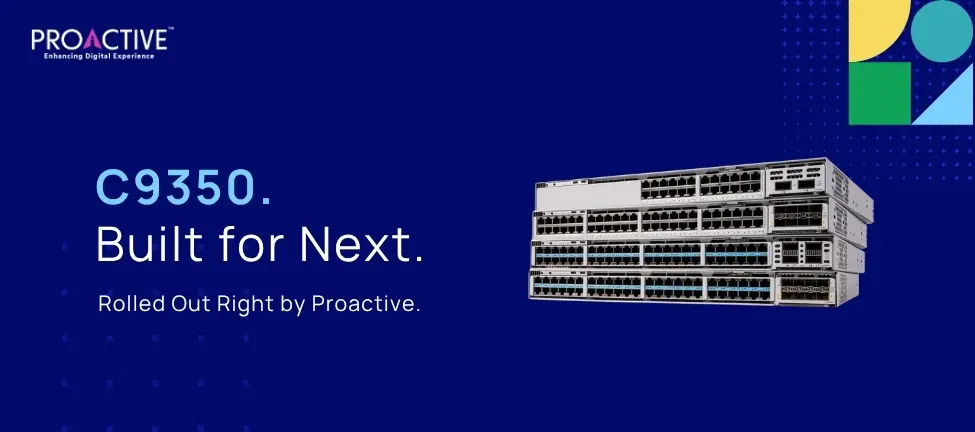Updated: Aug 08, 2025

When India’s largest hospital chain decided to move from basic segmentation to zero trust, its existing switching fabric couldn’t keep up. The ask wasn’t bandwidth. It was real-time identity enforcement, microsegmentation, and telemetry from the edge. They chose Catalyst C9350.
This isn’t a switch for incremental upgrades. It’s built for AI workloads, native telemetry, and hardware-accelerated security policies. If you’re still deploying traditional L3 access switches in high-density, latency-sensitive environments, you're already behind.
The C9350 is not just a Catalyst 9300 with better specs. It’s a different class. It ships with a 1.25 GHz multicore x86 CPU, 8GB DRAM, NVMe storage, and support for containerized applications. It also enables MACsec-256 and TrustSec enforcement with line-rate performance. In short, it's not a port extender. It's an AI and security node inside your campus.
C9350 supports Application Hosting. This means you can run lightweight AI agents or monitoring probes locally, at the access layer. For distributed enterprises, this eliminates the blind spots in centralized analytics.
Proactive helped a Pune-based engineering firm deploy C9350s with onboard app containers for AI-driven anomaly detection. They detected malformed DNS queries and east-west traffic anomalies that their SIEM had missed. With the traffic classified at source, the upstream gear stayed free for policy enforcement, not inspection.
Most Indian enterprises still rely on upstream firewalls to enforce segmentation. That model breaks down when your endpoints roam, your IoT inventory grows, and your threats move laterally.
C9350 enables TrustSec. Identity-based segmentation is enforced at the first point of contact. Whether it's a camera, a contractor laptop, or a BYOD phone, the policy applies before the traffic leaves the access closet.
In one of our BFSI rollouts, this eliminated 90 per cent of VLAN-based ACLs and reduced misconfiguration tickets by half.
C9350 works natively with SD-Access fabrics. It supports LISP, VXLAN, and scalable group tags. For enterprises looking to converge wired and wireless, enforce consistent policy, and scale across floors or campuses, this switch isn’t an upgrade. It’s a requirement.
Proactive ran a controlled rollout of C9350 at a Noida R&D campus with 6,000 users. The result: policy sync time dropped by 72 per cent compared to legacy gear, and telemetry gaps dropped to near zero.
You don’t just need hardware. You need deployment intelligence. Proactive scopes not just throughput and PoE, but thermal zones, breakout port behaviours, identity group design, and failure modes.
We run simulations of rogue endpoint injection. We map traffic entropy during peak workloads. We define rollback plans that IT ops can trigger in seconds.
No PDF datasheet will do that. Most partners don’t.
AI workloads are moving to the edge. Policy enforcement is shifting to access. Uptime now includes telemetry integrity.
C9350 isn’t overkill. It’s what future-ready looks like today.
Talk to Proactive before you define your next access refresh. We’ll make sure it’s not outdated before it’s even deployed.